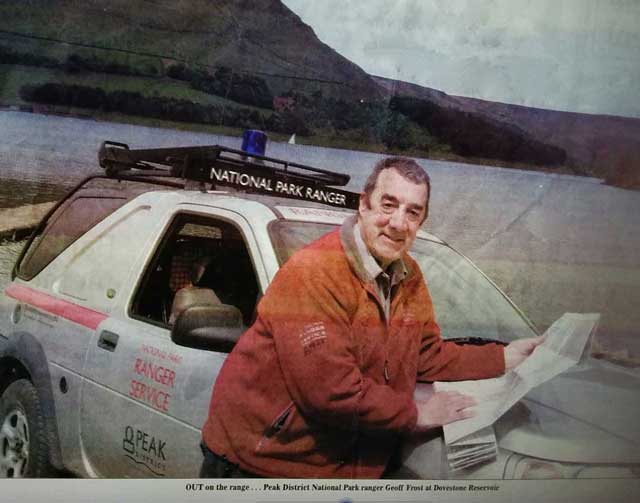Perhaps, of all developments in the area, the construction of Dove Stone Reservoir between 1960 and 1966 has had the most impact. Fortunately, the Dovestone area was within the Peak District National Park so stringent planning controls were in already in place. The beautiful valley was admired and treasured by thousands of people who were concerned that the reservoir would spoil the area. walkers, picnickers, ramblers, climbers, campers and various associations such as the Scouting movement, rose up to object to the scheme. It was by careful negotiation and the promise that a clause would be introduced in the Bill to ensure the preservation of various amenities that the objections were overcome.
Another big objection came from the nearby mill of Robert Fletcher & Son, manufacturers of 95% of the cigarette paper in this country. The mill already depended on the particular quality of the water for its manufacturing process, which was drawn from Greenfield Brook and Chew Reservoir. Indeed, in times of drought, the company extracted all the water from these sources.
A detailed description of the scheme can be read in the Booklet of Dove Stone Reservoir Construction on this website.
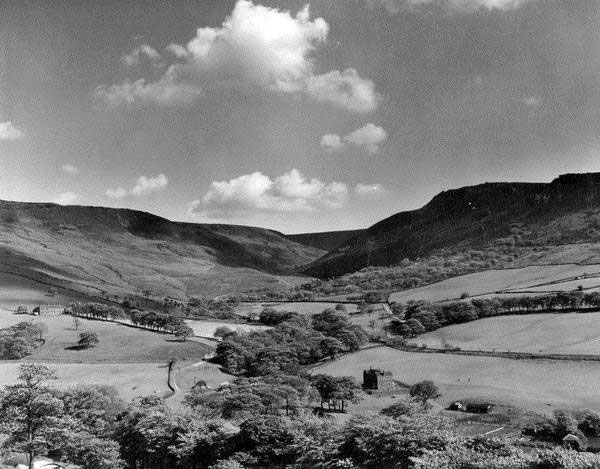
Dove Stone and Chew Valley before the reservoir © Stanley Willis a great photographer of this area and a really pleasant man.
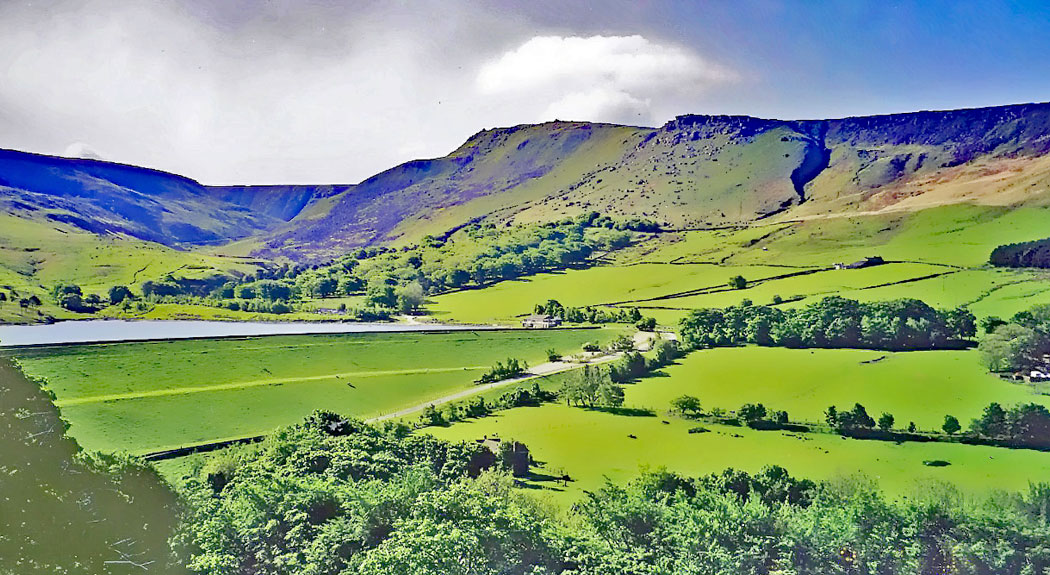
As it is today
Capacity 1075 million gallons ( 4887 million litres) Maximum depth 103 feet ( 31 metres)
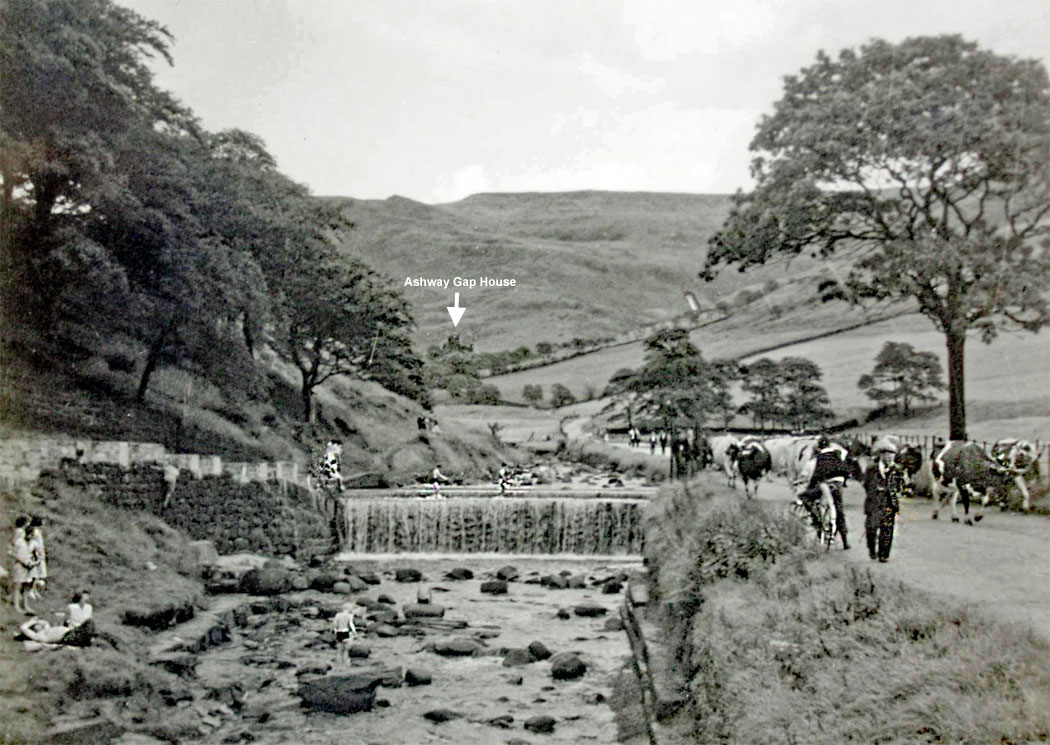
Known as Jabez Bath showing picnickers, children paddling, cyclists and cows on the road – from Greenfield Gone by on Facebook. All this area is now under the water of Dove Stone reservoir.
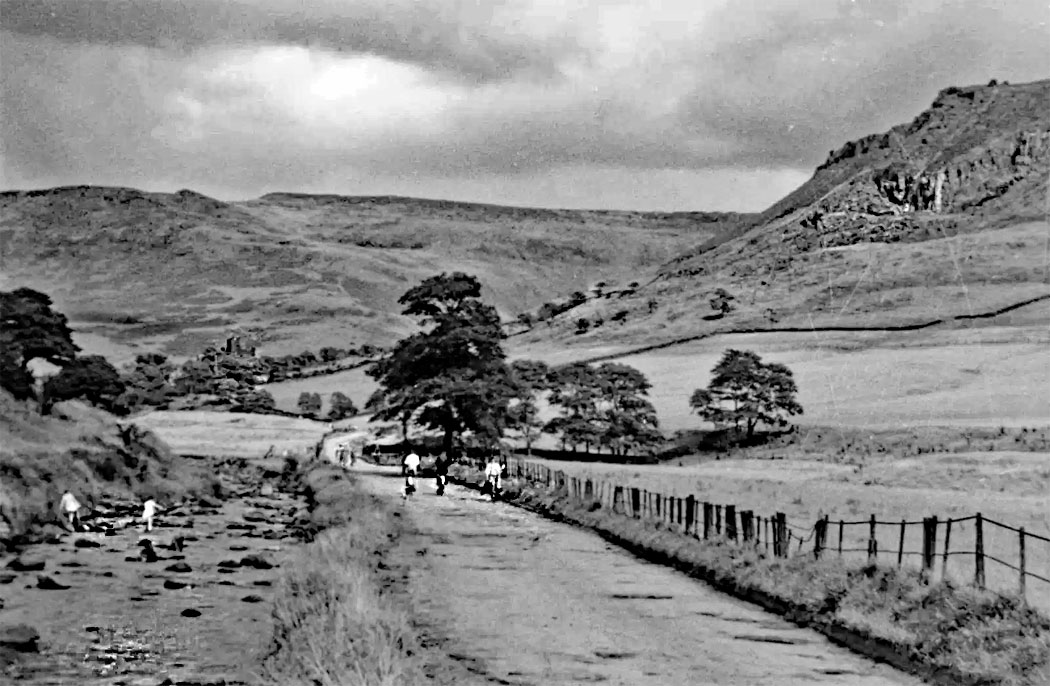
Just past Jabez Bath towards Ashway Gap – from Greenfield Gone by on Facebook
THE CONSTRUCTION
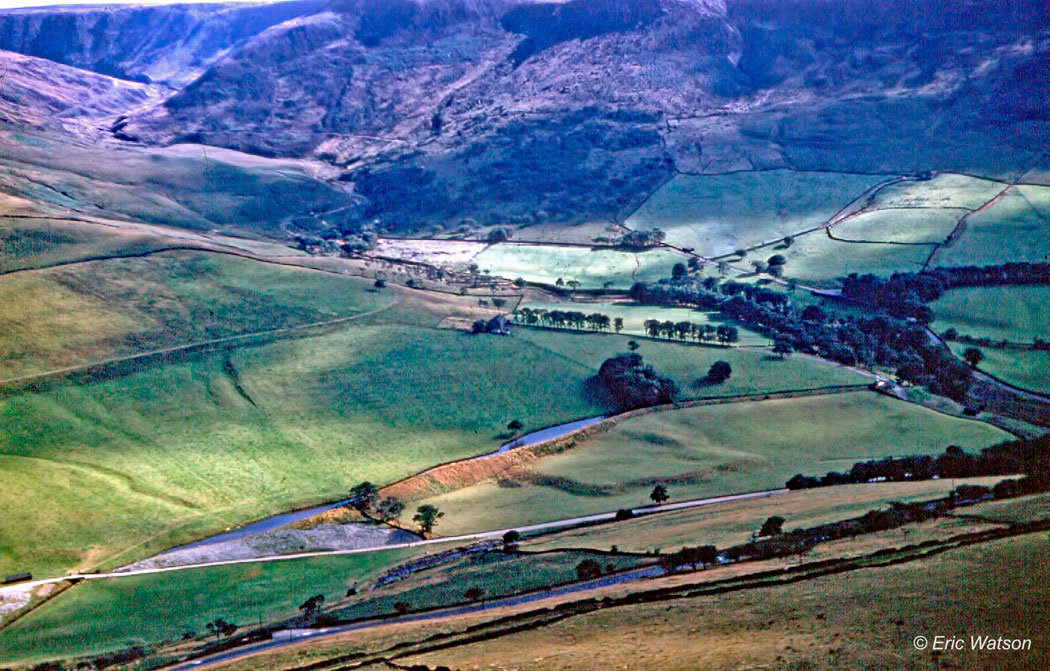
BEFORE CONSTRUCTION – with the kind permission of Eric Watson
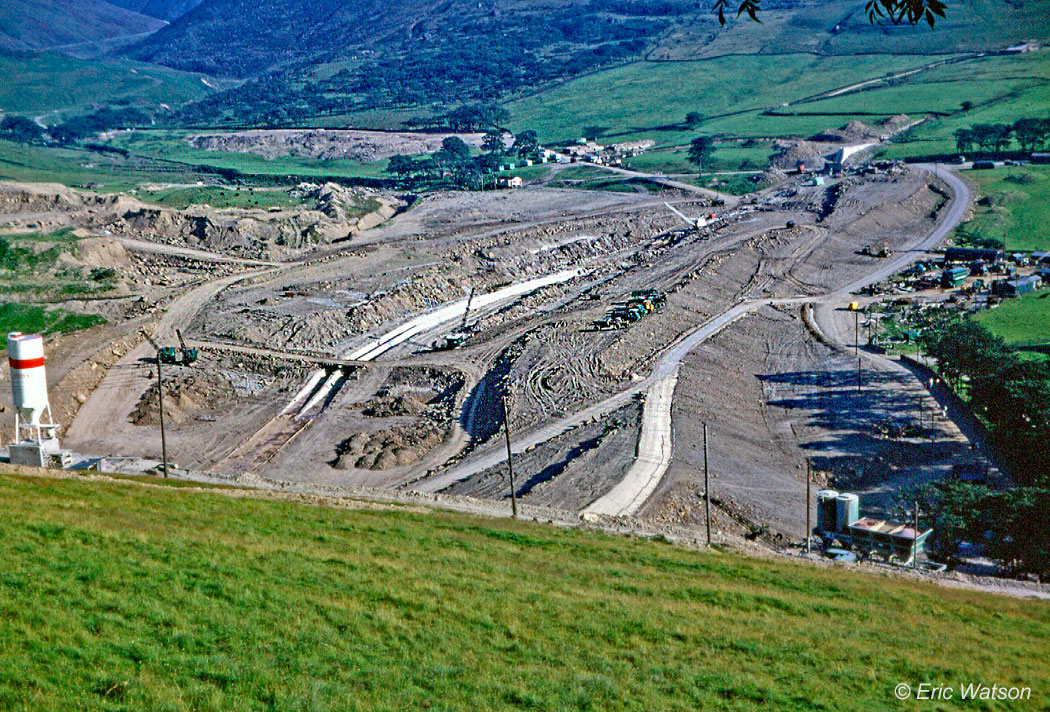
PRELIMINARY WORKS – with the kind permission of Eric Watson
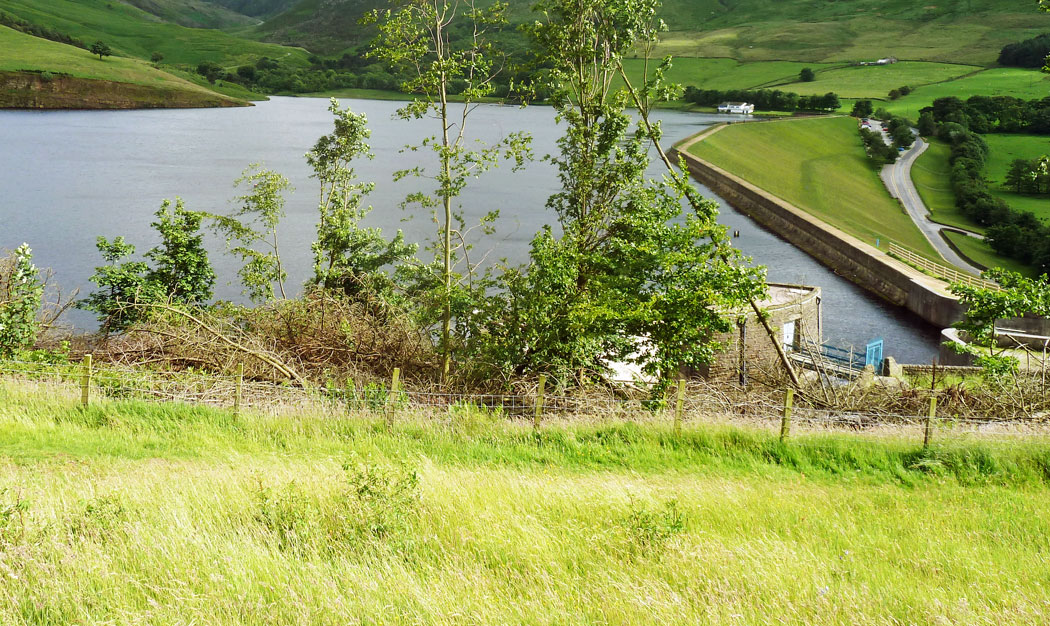
2016
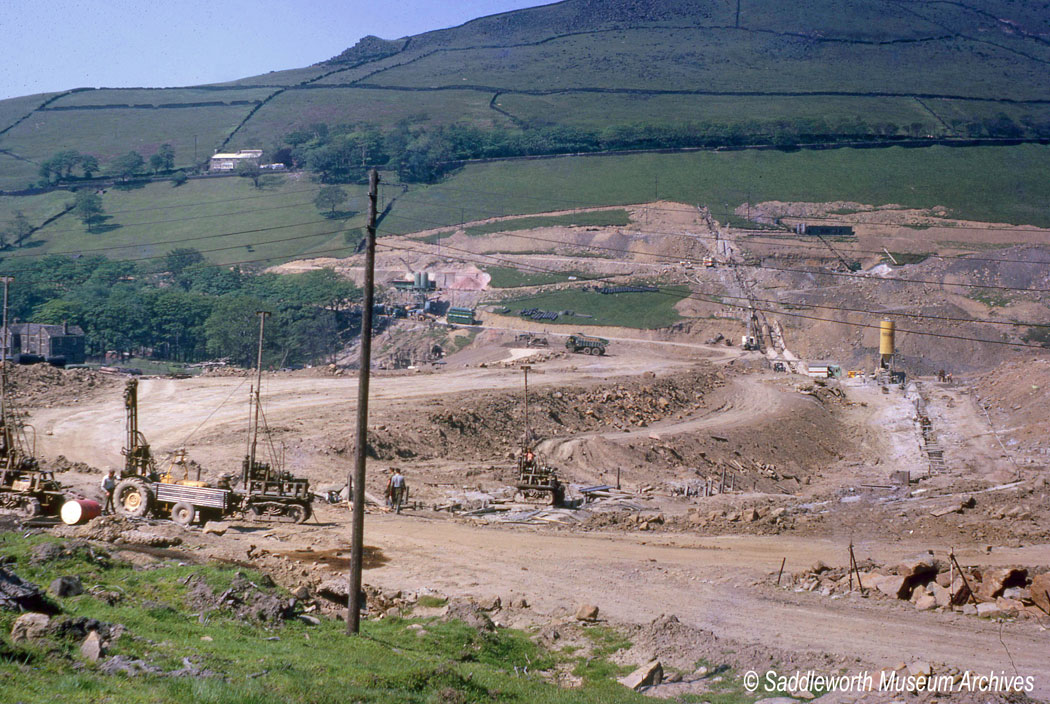
CREATING THE DAM – with the kind permission of Peter Fox, © Saddleworth Museum
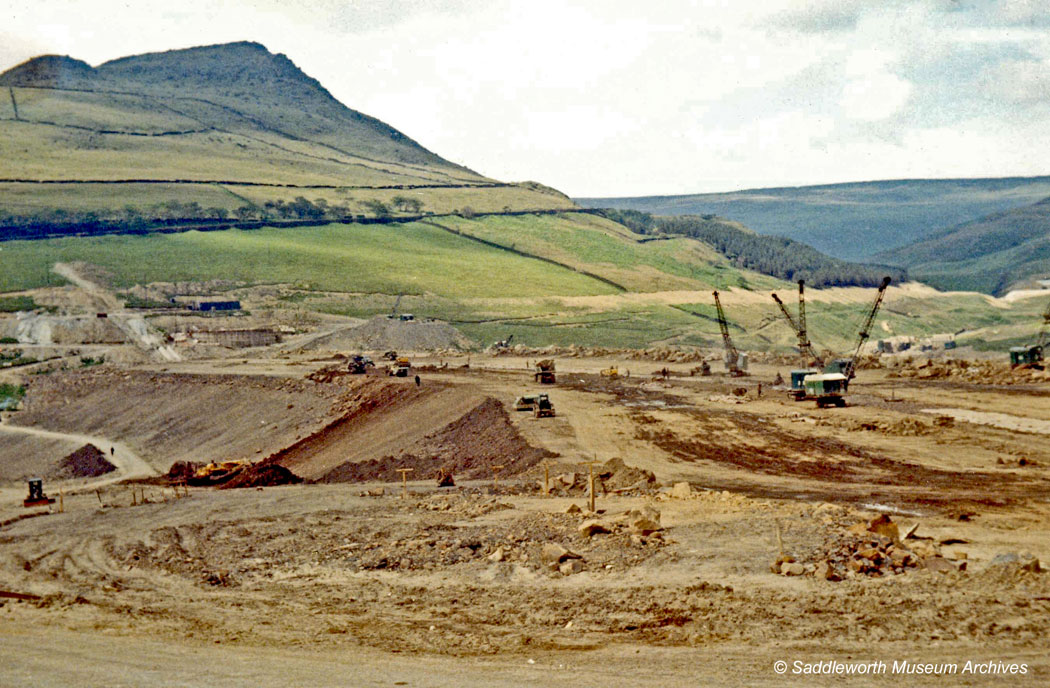
CREATING THE DAM – with the kind permission of Peter Fox ® Saddleworth Museum
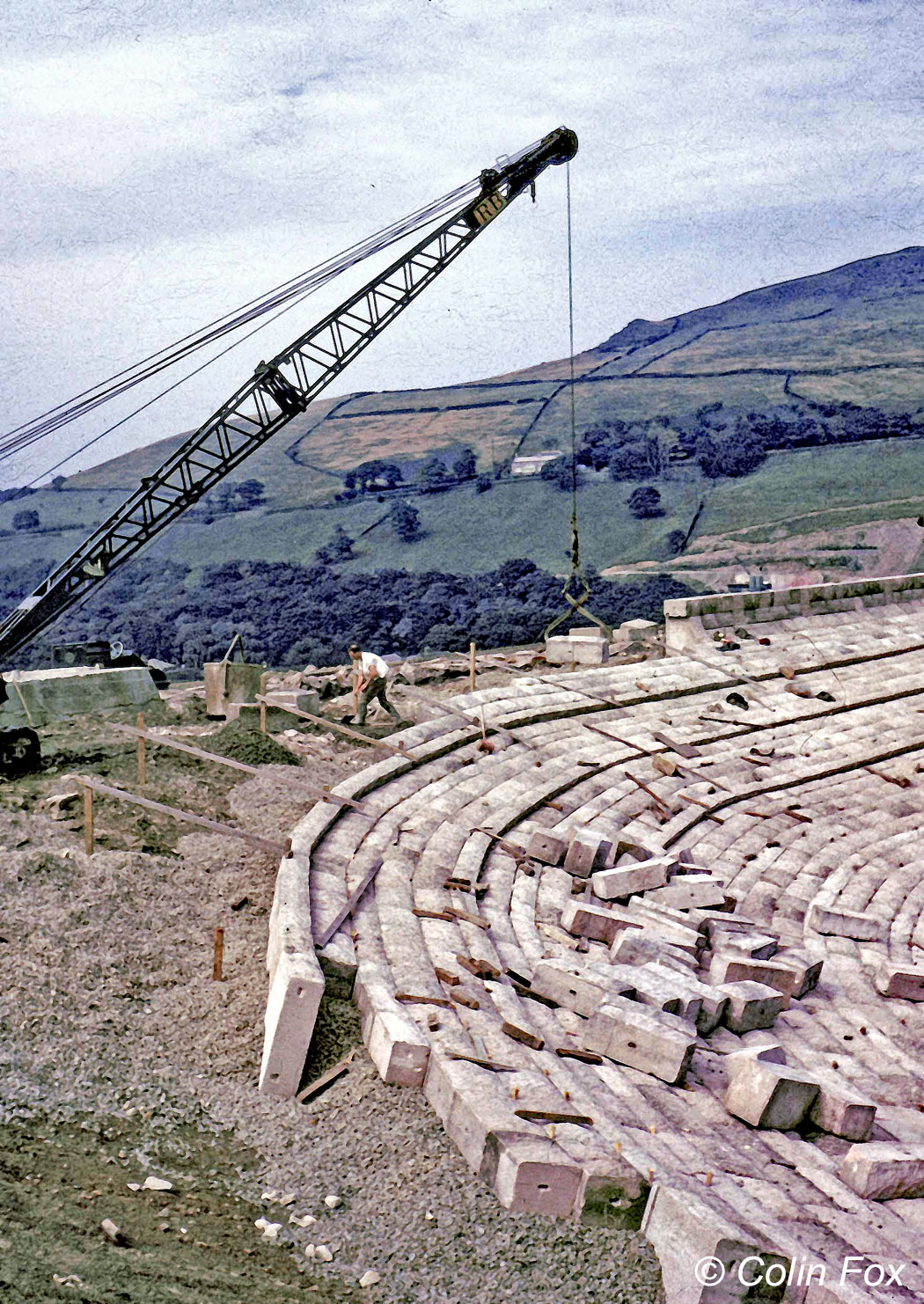
LAYING THE STONE BLOCKS – with the kind permission of Colin Fox
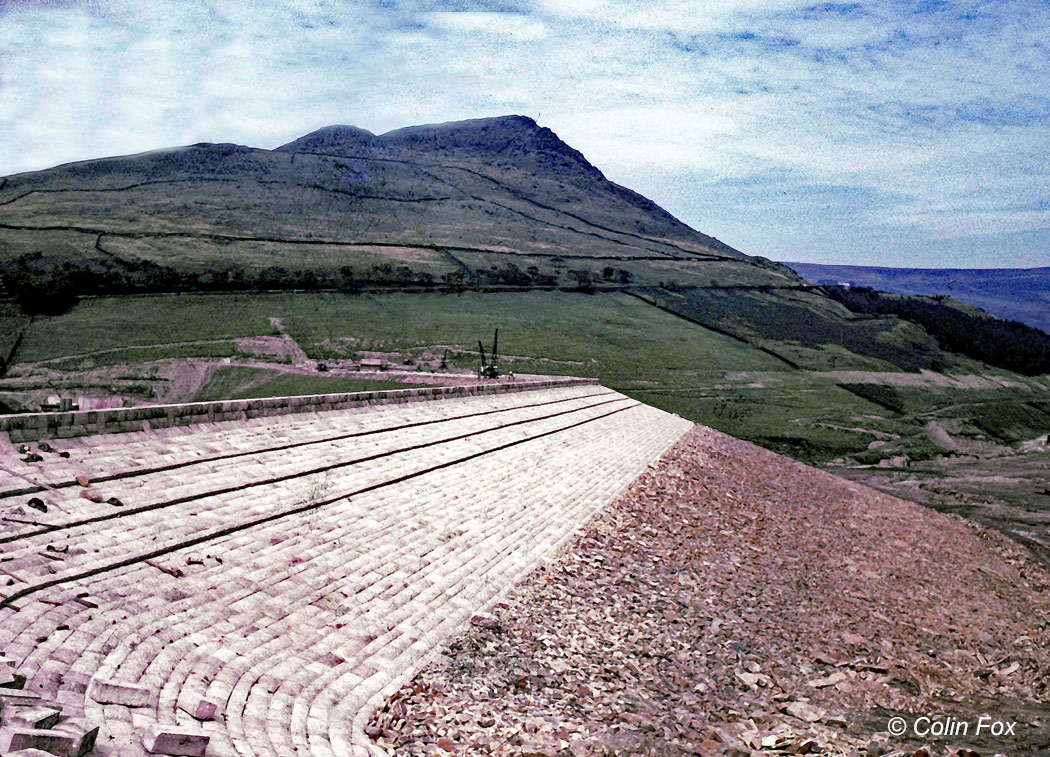
DAM WALL ALMOST COMPLETE – with the kind permission of Colin Fox
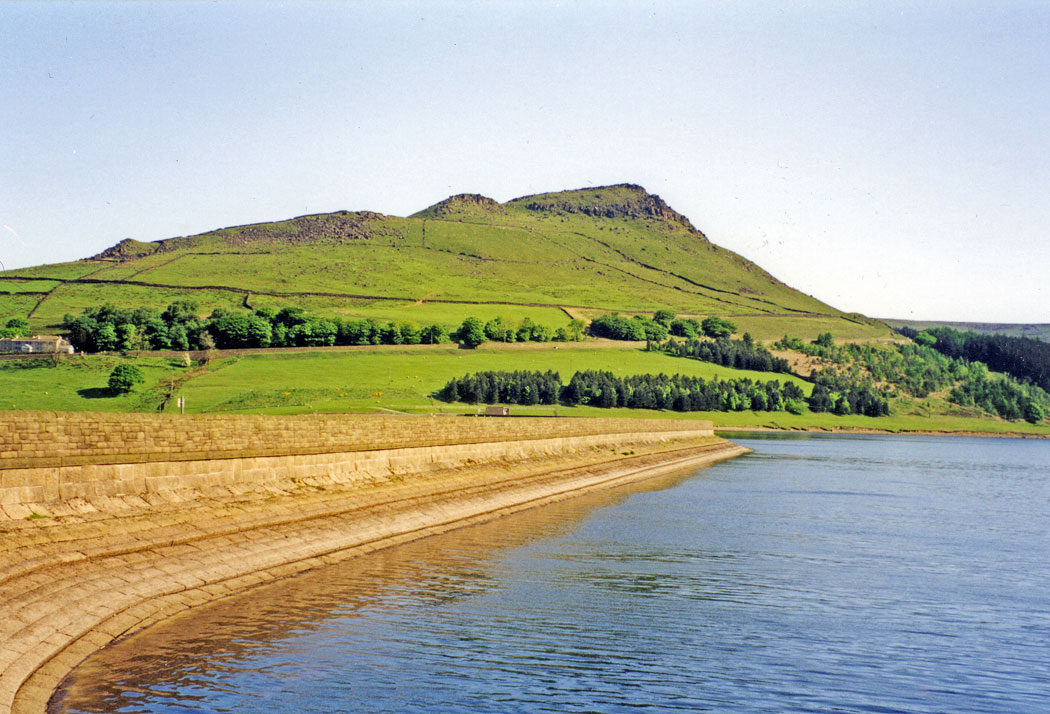
2005
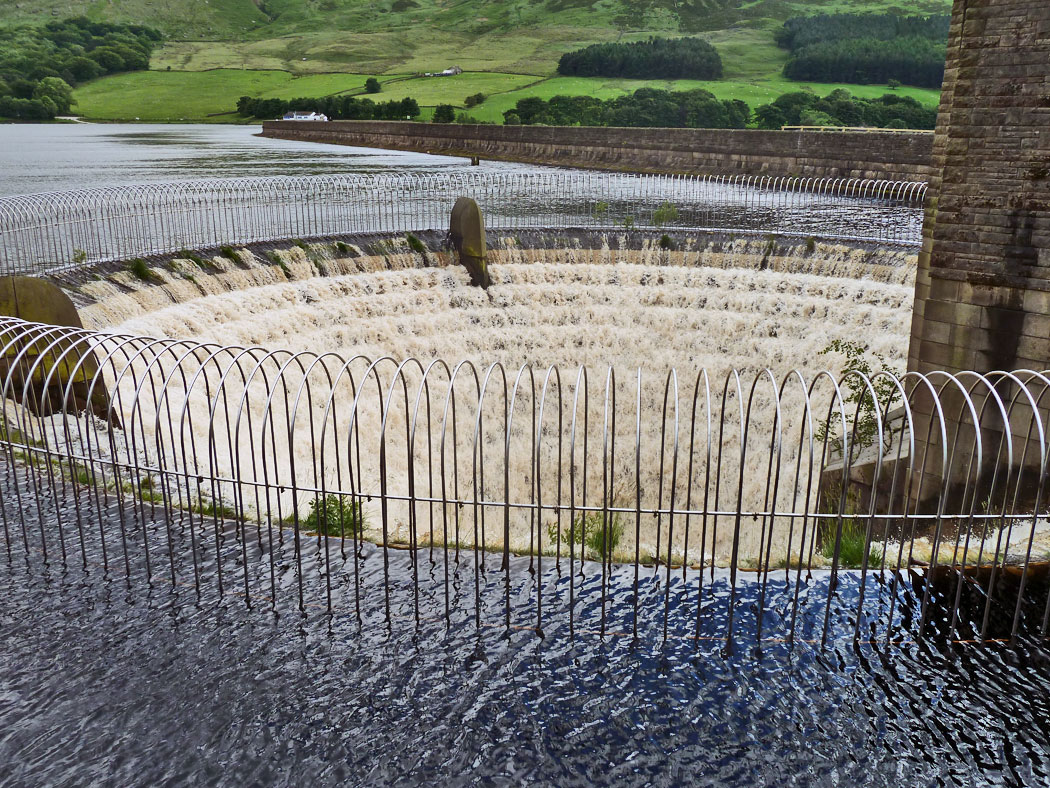
The original bell-mouth overflow (as in 2016)
SNIPPET
When the water level was low during one hot summer and before a guard was placed around the rim, I observed a group of foolhardy youths sunbathing on the overflow ‘steps’, some of them were several steps down.
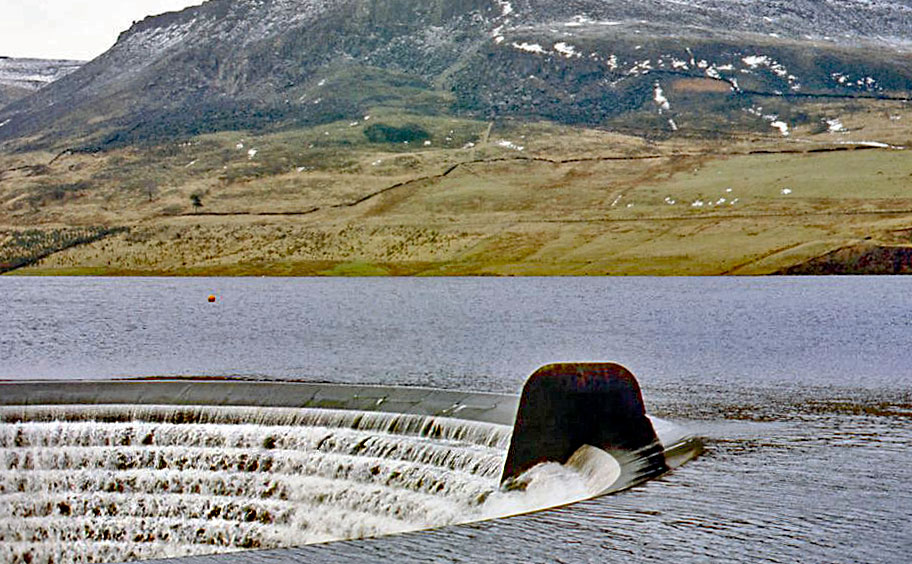
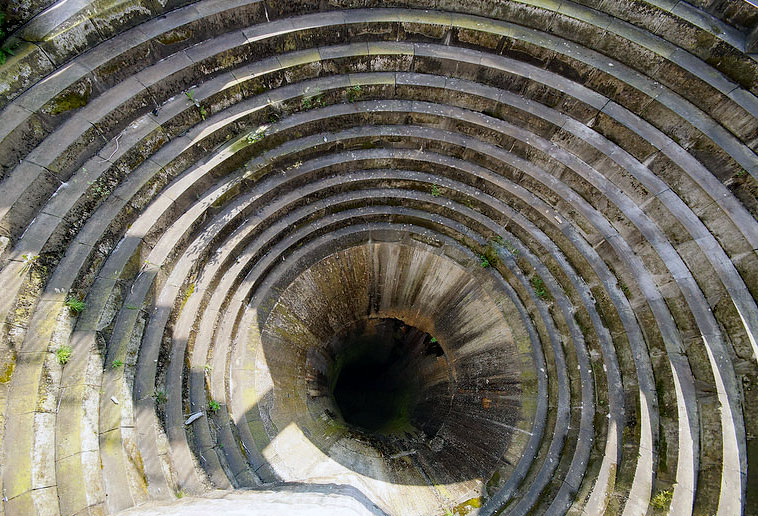
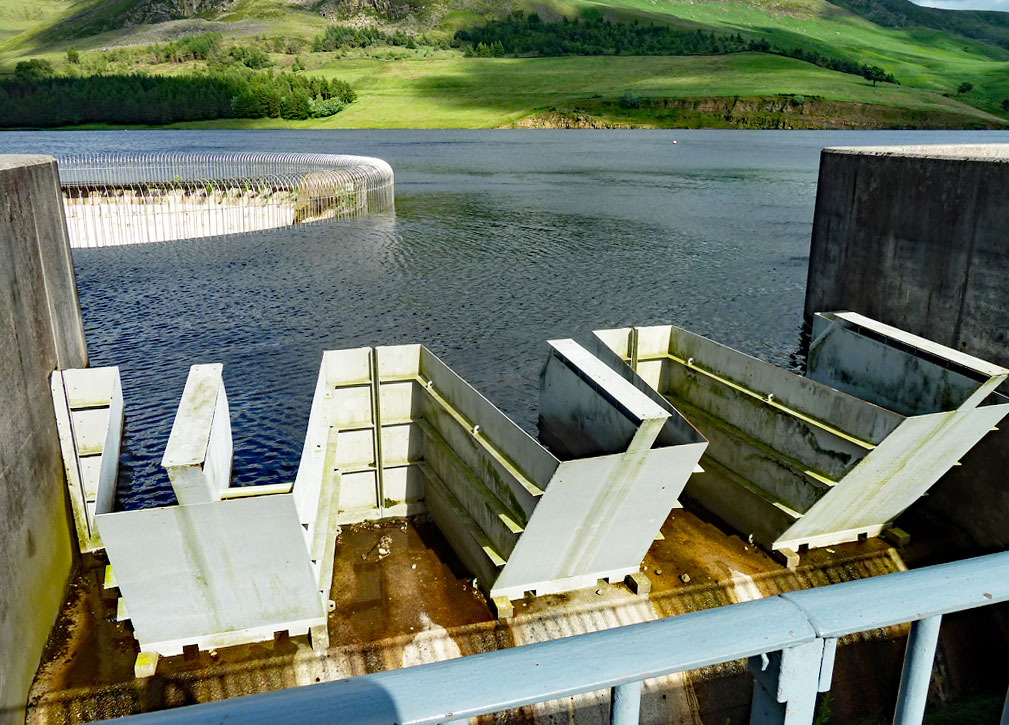
The Fusegates shown here (in 2016) were completed in 1995. They were installed to increase spillway capacity and to assist in case of a maximum possible flood where the bell-mouth overflow wouldn’t be able to cope and the amount of water could endanger the dam. Once breached, the water would flow along the concrete channel, across Bank Lane and down into the river. The Fusegates, made by Hydroplus, was the first to be installed in the UK although many had been installed abroad. A model of the system was first built by Salford University Civil Engineering Ltd to test the methodology and ensure it would work at Dove Stone.

